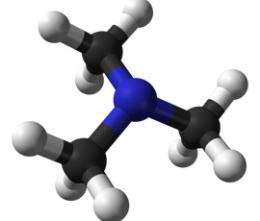Recommendations made for genetic testing for Trimethylaminuria

(Medical Xpress) -- Recommendations for genetic testing of an inherited disorder known as trimethylaminuria or ‘fish odor syndrome’ have been produced by researchers including Professor Ian Phillips from Queen Mary, University of London.
The guidelines, published in the European Journal of Human Genetics, follow the authors’ work on the disorder and their identification of the molecular genetic basis of trimethylaminuria.
Professor Ian Phillips, from Queen Mary’s School of Biological and Chemical Sciences, and his collaborators were invited by the European Commission to produce recommendations and guidelines within Europe, having already published recommendations and guidelines for diagnosis and treatment of the disorder in the USA, on behalf of the National Institutes of Health.
Trimethylaminuria or TMAU is a rare metabolic disorder that means the body cannot break down a compound called trimethylamine. This compound then builds up in the body, and is released in the person's sweat, urine, and breath, giving off a strong fishy odor.
Affected individuals appear normal and healthy; however, the unpleasant odour often results in social and psychological problems. Symptoms are usually present from birth and may worsen during puberty.
Ian Phillips, Professor of Molecular Biology, commented: “The disorder is caused by defects in FMO3, an enzyme that converts the smelly trimethylamine into a non-odorous product. Management of the disorder is through dietary restrictions, supplements and antibiotics, and, because the disorder is inherited, genetic counselling is available.
“The recommendations will provide quick and concise guidance for clinicians and geneticists. I hope that they will increase awareness of this distressing disorder and harmonize genetic testing for the condition across Europe.”
More information: ‘Clinical Utillity Gene Card for: Trimethylaminuria’ is published in the European Journal of Human Genetics online: www.nature.com/ejhg/journal/va … ll/ejhg2011214a.html















